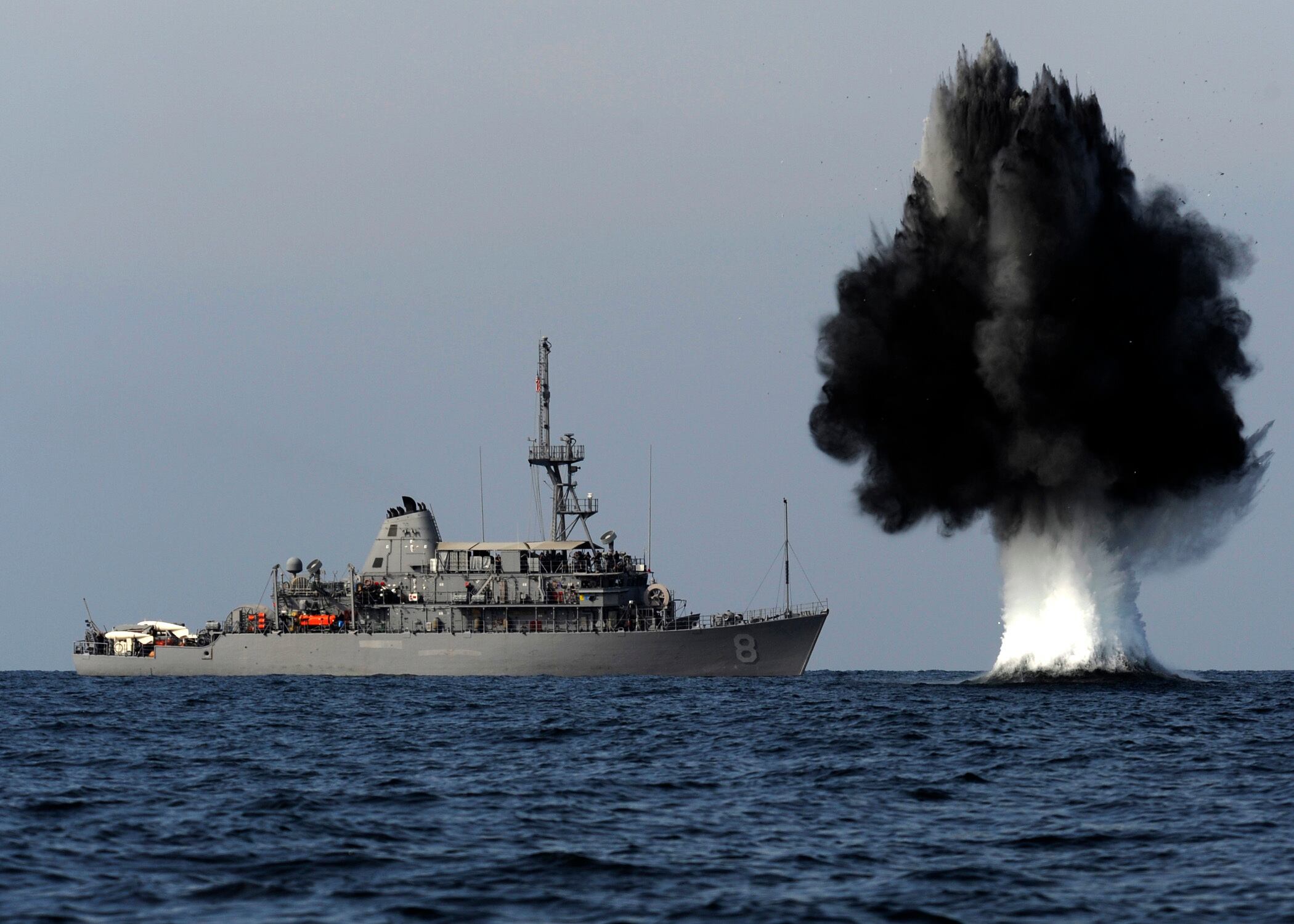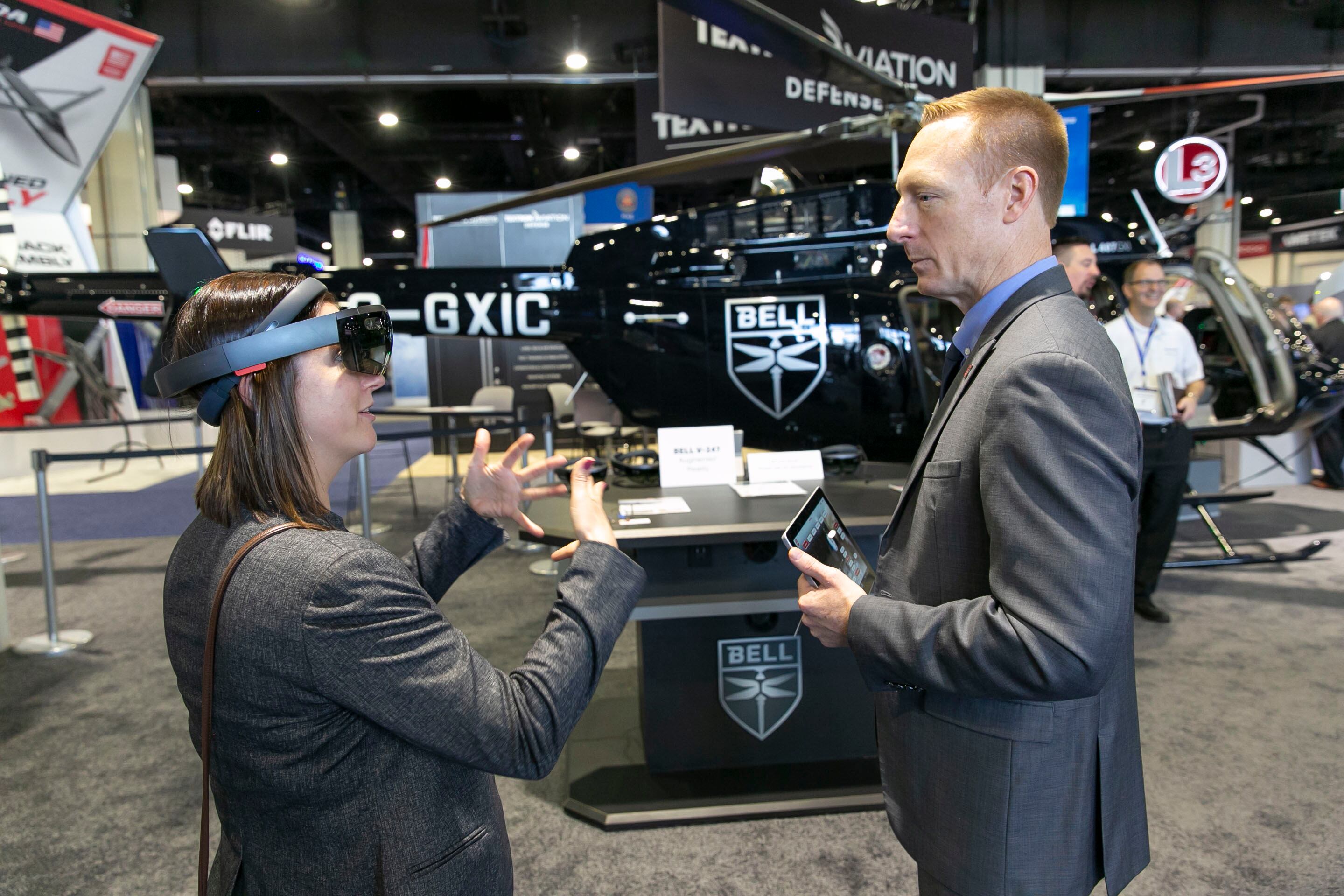NATIONAL HARBOR, Md. — Plucked from the special operations world at the beginning of the Trump administration, the U.S. Navy’s top acquisition official oversees procurement of some of the most expensive assets the military owns and operates.
His mandate has been to jump-start the Navy’s sluggish acquisition system and find ways to get ships and capabilities out to the fleet faster — in a Defense Department focused on high-end competitors China and Russia.
But James Geurts has also inherited issues, such as the Ford-class aircraft carrier that continues to climb in cost, and he’s newly in charge of fixing a servicewide maintenance mess caused by years of cuts and overtasking of a shrinking fleet.
Geurts spoke with Defense News at the 2019 Sea-Air-Space conference.
You’ve been in the job for about 18 months. What are some of the principles you bring to the job and the way you approach research, development and acquisition?
So, it’s been about 18 months. It’s amazing how fast the time goes. And really, from Day One, I’ve had four things I’ve focused on. First and foremost is delivery. We have got to get capability into the fleet, whether that’s new capability, new construction or sustaining the capability we have. So my ultimate measure of success is through the fleet’s eyes. Reorganizing our value proposition along that line I think has been an important piece.
Second piece is focusing on agility. The world is changing faster and faster, threats are changing, we’re in a world competition. And so if we can’t change faster, we are not going to be relevant.
Third piece has been focusing on getting some fundamental costs out. And as we try and grow the fleet, they won’t do as much good if we can’t afford to build and operate that fleet. We want to take fundamental costs out of the system.
And then finally, and most importantly, is developing talent. Whether that’s in the fleet, whether that’s in the industry, whether that’s in the government spaces. It’s really a talent game.
RELATED

Chairman of the Senate Armed Services Committee Sen. Jim Inhofe, R.-Okla., has been vocal about the need to control the costs of the first-in-class ships. You’ve got Columbia coming up, as well as FFG(X), large surface combatant and a fleet of unmanned ships. How are you getting your arms around that?
That’s certainly a fundamental thing to watch. First-in-class ships are tough. You know, I came from the scenic aircraft world or special ops world where you build a development asset, then you test it and then you [move to] production of assets. Your kind of first development asset is your first ship.
Fundamentally, I think it comes down to a couple of different things. One is having a robust dialogue as we are building requirements with both industry and our technical experts, and moving away from what I call transactional requirements. The frigate is an example where we’ve had a much more interactive dialogue. We've actually changed requirements based on cost and time, and so, that’s an important element. We’re doing a lot more of that.
Second is really taking a hard look on the government side for talent, and making sure we got the talent not only relevant for things we always need to know — shipbuilding and things like that — but also new things: autonomy, software, etc.
Then third, I’m looking hard at the contract vehicles. The contract strategy of the future is probably not one contract of one type to one supplier, but a number of contracts. A prime contractor build, a price challenge to look at new technology, a digital twin to evaluate it — all of those things, I think, will play into allowing us to get more credibility in our delivery programs out of the gate.
Industry seems excited about predictive analytics in the maintenance world: knowing what’s going to break before it breaks. Do you see potential there for significant cost savings?
That’s where the commercial world’s gone. We have the data. We haven’t integrated the data and the analytics into our processes the way we need to.
I see us in the future having essentially a digital twin of the ship in terms of how all the systems are working, what needs maintenance, what doesn’t and how are they operating, to better condition our maintenance planning. The biggest thing we need to improve in our maintenance work is planning, and so that when we open up a ship, we have a better idea of what needs to be done. And then a little less focus on cost and more focus on schedule, because what the fleet really is sensitive to is ships coming in on time and ships coming out on time.
RELATED

Sometimes we get a little too fixated on cost, and we incur a lot of cost because we control cost by having schedule move-out, and that just ripples its way all the way through the system.
We’re looking at reducing government inspections by 50 percent. We need to set the standards for shipbuilders in the ship repair world, and then let them go so that we are not unnecessarily holding up maintenance activities as they’re ongoing. That’s what I need to deliver for the fleet.
The private shipyards that do maintenance often complain the Navy is too unpredictable. What can you do to regain the trust of industry?
I would say our lack of either planning or adhering to plan has been one of the core issues. This is the first year we’ve ever produced a 30-year ship maintenance plan. Now, it’s not specific for every ship at every time, but it shows the amount of work we’ve got to do and how we’ve got to build so that industry can make smart investments seeing that.
Then what we’re trying to do for the ships returning from deployment is we’re moving away from executing a contract 30 days before we needed to start the maintenance. So now we’re back to a six-month goal, so we have a plan.
We’re never going to be able to control every variable. It’s not a commercial effort where you own every route and you can control every variable to hyper-optimize. And, quite frankly, we don’t want to hyper-optimize because then you lose some resiliency. But we’re trying to find that sweet space of enough predictability so that we can be efficient.
The other thing we’re doing is setting some controls. In new construction, we have a very disciplined way to add work in. We didn’t have quite that level of discipline in repair, and so we tended to add work in late in the game.
We’re adding some discipline into that, so if we advance plan a little bit sooner and add some more discipline, then we can make a better decision on the exact impact. Because while it may not seem that large for that individual ship, it could have a huge ripple effect, and we need to be cognizant of that when we make those decisions.
You’ve been especially challenged on the submarine maintenance front, particularly with the attack boats. Do you see light at the end of the tunnel?
We have accelerated by about a year hiring all the government folks in the shipyard to get to full strength — they’re at about 36,100. So the good news is we’ve got the workforce. The challenges are that they’re fairly green.
There has been some phenomenal work, at Portsmouth Naval Shipyard in particular, but all the shipyards are getting that experience to level up. That will give us the depth going forward in a couple of years to take care of our fleet as we build back up to a 66-submarine fleet.
To help some of the surge, we’ve been sending some to the private yard. And that’s another area we’ve got to get a skilled base of repair specialists. We’re challenged a little bit on the front end, I think we’ll work our way through that.
Then third is rebuilding the shipyards for the future. So the Navy’s got about a $21 billion investment over the next 20 years. That will allow us, as the workforce matures, to then gain efficiency, about 20 to 30 percent, which will then allow us to take that increased load once we come out of the dip in submarine numbers.
You’ve got two and now sometimes three Virginia-class attack submarines a year in the budget. You’ve got the Navy’s No. 1 priority on deck, the Columbia-class ballistic missile submarine program. You’ve also got supplier issues. Can you tell me how you plan to stabilize the supplier base?
We have a submarine industrial base — both government, supplier, and at Electric Boat and Newport News — that has done tremendous things rebuilding itself from a decade of hiatus in the ’90s. We’ve gotten up to two Virginias per year and done a very good job with that.
Submarines are very sensitive to cadence and sequence, and so the arc will be, as we add in Columbia and some of the other mods we want to do to Virginia, not to mess up that cadence and sequencing, and [thus] cause massive disruptions.
So we supremely focused on Columbia, making sure that design is solid. The biggest threat to Columbia is Virginia, and so if we don’t keep Virginia on track, then that can cause disruption to Columbia. The biggest threat to Virginia is the supplier base not being able to keep up. We have an integrated enterprise that looks at all the suppliers for all of our nuclear construction — in total it is about 329 suppliers — and making sure they are up to the task. And then, where we see challenges either getting it right or having kind of single source, proactively addressing those challenges.
Congress has been a great help with us. They provided funding to go after those, and so we will continue to manage that, but it’s a big enterprise, and we have got to keep focused on it.
David B. Larter was the naval warfare reporter for Defense News.








